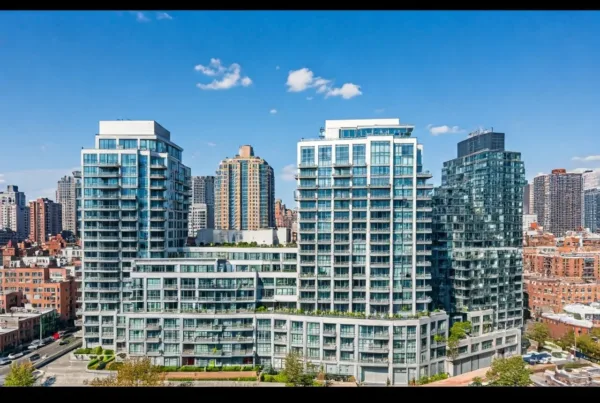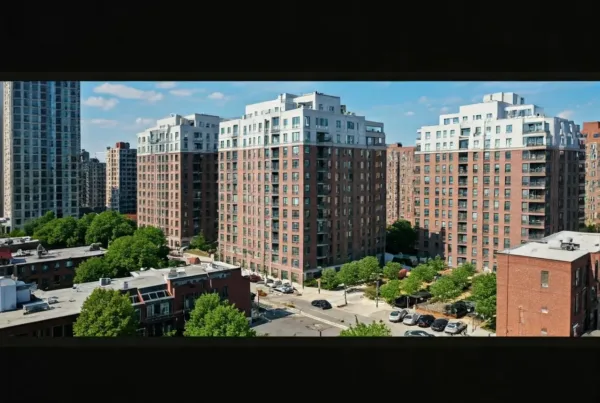Uncover the secrets to navigating the NYC real estate market with our comprehensive step-by-step guide for buying your dream home.
Table of Contents
Welcome, young reader! Today, we’re going on an exciting journey to learn how you can buy a place in New York City (NYC). Imagine having your own little spot in one of the most famous cities in the world! This guide will walk you through all the steps and important things to know. Let’s get started!
Choosing the Right Home for You
Finding the perfect home is the first, and maybe the most important, step. Whether you’re looking for a shiny new condo or a cozy old apartment, you have to know what you want and what fits your needs.
Condos vs. Co-ops
Learn the difference between condos and co-ops to find out which one is the best fit for you.
New Construction vs. Older Buildings
Understand the pros and cons of buying a brand-new apartment versus an older one. Are you looking for something shiny and new, or something with character?
Exploring New Developments
NYC always has new buildings popping up. These new developments can be very exciting! Let’s explore why new construction apartments might be a great option.
Benefits of New Construction
Discover why people love new apartments – everything is brand new, from the floors to the appliances!
Finding New Developments
Learn how to find and choose the best new developments in the city. Where are the new hot spots?
Understanding the Costs
Buying a home isn’t cheap, especially in NYC. Let’s break down all the costs you need to know about.

Image courtesy of www.pinterest.com via Google Images
Down Payment
When you buy a place in NYC, you usually need to make a down payment. This is a big chunk of money you pay upfront, kind of like a deposit. The down payment shows the seller you’re serious about buying the place. The amount can vary, but it’s usually a percentage of the total price of the home.
Monthly Costs
Once you’ve made your down payment and bought your home, there are still more costs to think about. Every month, you’ll have to pay for things like your mortgage, which is a fancy word for a loan that helps you buy your home. You’ll also have to budget for maintenance fees to keep your building in good shape. And don’t forget about utilities, like electricity and water, which you’ll have to pay for every month, too.
The Buying Process
Once you have found the perfect place in NYC and have a good understanding of the costs involved, it’s time to dive into the actual buying process. Here are the steps you need to follow to turn your dream of owning a home in the Big Apple into a reality.
Getting Pre-Approved for a Loan
Before you can make an offer on your dream apartment, you need to get pre-approved for a loan. This step is crucial because it helps you understand how much money a bank is willing to lend you based on your financial situation and credit history. Getting pre-approved also shows sellers that you are serious about buying.
| Step | Description |
|---|---|
| 1 | Set a budget |
| 2 | Get pre-approved for a mortgage |
| 3 | Research neighborhoods |
| 4 | Find a real estate agent |
| 5 | Start viewing properties |
| 6 | Make an offer |
| 7 | Negotiate the price |
| 8 | Get a home inspection |
| 9 | Sign the contract |
| 10 | Closing day |
Making an Offer
Once you’ve found the place you want to call home, it’s time to make an offer. Making an offer involves negotiating the price with the seller and coming to an agreement. Your real estate agent will help you navigate this process and ensure that your offer is strong and competitive.
Inspections and Paperwork
After your offer is accepted, it’s time for inspections and paperwork. Inspections are important to make sure there are no hidden issues with the property that could end up costing you a lot of money down the line. You will also need to fill out a lot of paperwork, including the sales contract and mortgage documents.
By following these steps in the buying process, you will soon be the proud owner of a place in the vibrant city of New York. Remember, patience and attention to detail are key, but the end result is definitely worth it!
Moving In
Finally, it’s time to move into your new home! This last section covers all the fun and important things to do once you’ve bought your place.

Image courtesy of ru.pinterest.com via Google Images
Decorating Your Space
Now that you have the keys to your new home, it’s time to make it your own. Think about what colors and decorations you love. Maybe you want a cozy corner with a big, soft chair to read in, or a space for all your toys and games. Get creative and have fun making your new place feel like home!
Meeting Your Neighbors
Living in a new place can be exciting and a bit scary at first. But don’t worry – your neighbors are there to help! It’s a good idea to say hello and introduce yourself. Who knows, you might make some new friends right next door! Being friendly and kind to your neighbors is a great way to start off on the right foot in your new home.
Conclusion
Congratulations! You now know all the basic steps to buying a place in NYC. Remember, it’s a big decision and takes time, but it’s also really exciting. Happy house hunting!
FAQs
How do I find new construction apartments in NYC?
Look for real estate websites and local listings featuring new developments. These websites will often have a section dedicated to new construction projects in the city. You can also reach out to real estate agents specializing in new developments to get more information on available options.
Is buying a new apartment better than an old one?
Begin your search and start earning cash back!
Both new and old apartments have their pros and cons. New apartments are modern, often come with updated amenities, and may have less maintenance issues. On the other hand, old apartments can have more character, unique features, and may be located in established neighborhoods with a sense of community. Ultimately, the decision depends on your personal preferences and priorities.







